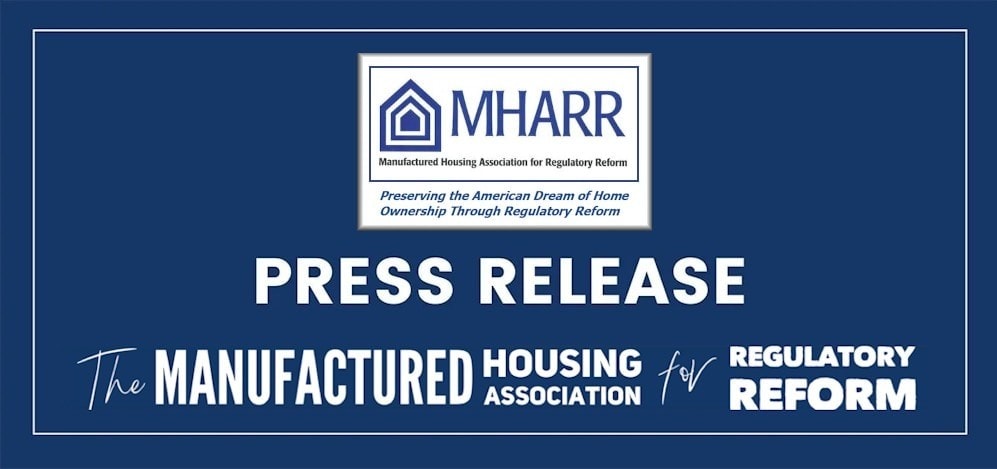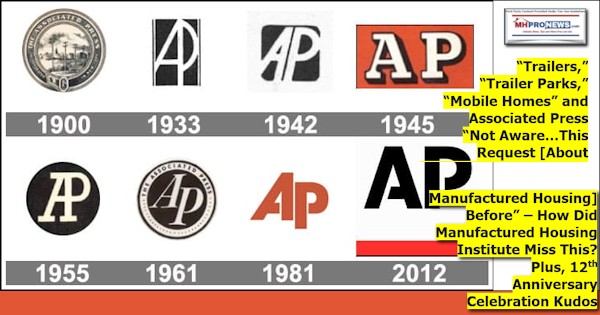Part I of this report is the HUD News release dated 2.5.2025 from U.S. Department of Housing and Urban Development (HUD) about the Senate confirmation of incoming HUD Secretary Eric Scott Turner. Part II is a news release from the Manufactured Housing Association for Regulatory Reform and an attachment from that Washington, D.C. based trade group. Part III is additional information, analysis, and Manufactured Home Living News (MHLivingNews) commentary focused on the end of the headline topic of obtaining generational wealth via ownership of a HUD Code manufactured home.
Part I
WASHINGTON – Today, Scott Turner was confirmed by the United States Senate to be the 19th Secretary of the U.S. Department of Housing and Urban Development (HUD). Secretary Turner was confirmed by a bipartisan vote of 55-44 and sworn in by Associate Justice of the United States Supreme Court, the Honorable Clarence Thomas.
“I am honored and humbled to serve the American people and the Trump Administration as Secretary of Housing and Urban Development,” Secretary Turner said. “On President Trump’s first day in office, he signed an executive order to lower the cost of housing and expand housing supply. As Secretary, I will lead the department in furthering these priorities.
“The path ahead of us presents an opportunity to restore HUD to its core mission of supporting strong and sustainable communities and quality, affordable homes — serving our nation’s most vulnerable. We must reduce burdensome regulations to make homeownership easier while unleashing prosperity that has been stifled in communities across the country for far too long. Housing goes beyond the four walls of a home; it helps build thriving communities and is the foundation of the American Dream.
“God blessed us with this great nation, and together, we can increase self-sufficiency and empower Americans to climb the economic ladder toward a brighter future.”
On January 16, 2025, Secretary Turner testified before the United States Senate Committee on Banking, Housing, and Urban Affairs. His full testimony can be found here.
Secretary Turner was confirmed by the United States Senate on February 5, 2025, to be the 19th Secretary of the U.S. Department of Housing and Urban Development (HUD). Secretary Turner previously led the White House Opportunity and Revitalization Council (WHORC), driving the Opportunity Zones Initiative. He also served as an Associate Pastor at Prestonwood Baptist Church, Founder and CEO of the Community Engagement & Opportunity Council, and a housing development executive at JPI. A lifelong Texan, Turner represented the 33rd District in the Texas State Legislature and played nine seasons in the National Football League (NFL).
Make sure to follow @SecretaryTurner on X, FB, and Instagram.
—
Part II – In a press release dated 2.6.2025 from the Manufactured Housing Association for Regulatory Reform (MHARR) is the following.
Note the header design below is by MHProNews and MHLivingNews and is not MHARR’s official header.
MHARR Initiates Action With Trump Administration on Major Industry Bottlenecks
Washington, D.C., February 6, 2025 – As President Donald Trump’s second term begins, MHARR has been extremely active in communicating both with the President and his nominees to lead the U.S. Department of Housing and Urban Development (HUD) and the U.S. Department of Energy (DOE) to begin addressing and resolving the principal bottlenecks that have stymied the growth of the federally-regulated manufactured housing industry and have prevented the industry from reaching its maximum potential, while simultaneously imposing significant harm on American consumers of affordable housing. MHARR is pursuing this aggressive initiative based on three fundamental premises:
1. Manufactured housing must be – and must remain – federally-regulated pursuant to uniform standards, uniform enforcement and robust federal preemption which result in cost savings that are passed to homebuyers;
2. It is beyond dispute that today’s federally-regulated manufactured homes are the industry’s best homes ever, offering high quality and inherent affordability; and
3. The industry largely wasted its opportunity during the first Trump Administration to remove the three principal bottlenecks that have impaired the industry’s growth and expansion while simultaneously harming homebuyers.
Despite Congress’ enactment of outstanding laws designed to ensure the full parity of manufactured homes with all other types of single-family housing — i.e., the Manufactured Housing Improvement Act of 2000 (2000 Reform Law) and the “Duty to Serve” (DTS) provision of the Housing and Economic Recovery Act of 2008 (HERA) — and the unparalleled regulatory reform opportunities presented during President Trump’s first administration, the industry as a whole has failed to gain any significant traction in rectifying these bottlenecks, including specifically:
1. Forcing HUD to fully implement the enhanced federal preemption of the 2000 Reform Law to end the discriminatory zoning exclusion of HUD-regulated manufactured housing from entire communities;
2. Forcing Fannie Mae and Freddie Mac to serve the dominant manufactured housing personal property consumer financing market in accordance with DTS; and
3. Eliminating DOE’s draconian, destructive and discriminatory manufactured housing “energy conservation” standards.
Instead, the portion of the industry represented by the Manufactured Housing Institute (MHI), spent 2016-2020 pursuing speeches, exhibitions, displays and other public relations stunts that ultimately did nothing substantive to change the diminished status quo for the industry, which has consistently underperformed for nearly two decades notwithstanding a national affordable housing crisis. So much could have been accomplished over that period to put the industry back on track – but was lost to a wild goose chase of wasted opportunities.
Now, with a second Trump Administration assuming office, MHARR is taking no chances on a repeat of the industry failures of 2016-2020. Instead, MHARR has taken immediate action to fill the policy vacuum and take the lead with respect to the major regulatory bottlenecks that have suppressed the industry and its ability to fully serve the millions of American families in need of safe, decent and affordable non-subsidized housing and homeownership. Rather than cede market share to other types of construction, this effort is targeted at establishing mainstream HUD Code manufactured housing once and for all as the market-dominant, most affordable and most cost-efficient housing option over all other types and forms of factory-built housing.
In accordance with this overriding objective, MHARR has sent three communications (copies attached) to HUD Secretary-Designate (now confirmed HUD Secretary) Scott Turner and DOE Secretary-Designate (now confirmed DOE Secretary) Chris Wright.
Most significantly, in a January 30, 2025 communication to HUD Secretary Turner (Attachment 1), MHARR calls for HUD to federally preempt, under the enhanced federal preemption of the 2000 Reform Law, discriminatory zoning edicts that have unlawfully excluded HUD-regulated manufactured housing from far too many areas of the United States. Citing specific authority in the 2000 Reform Law, as contemporaneously confirmed in writing by key proponents of the 2000 Reform Law in the House of Representatives, MHARR maintains that such exclusionary zoning “requirements” undermine the core federal purposes of the 2000 Reform Law (including but not limited to ensuring the availability of federally regulated affordable manufactured housing for “all Americans”) and federal superintendence of the industry. MHARR, accordingly, calls for HUD to:
(1) Withdraw outdated 1997 preemption “guidance” which is inconsistent with the 2000 Reform Law;
(2) Initiate the development within the Manufactured Housing Consensus
Committee (MHCC), of new preemption guidance that is consistent with the
enhanced federal preemption of the 2000 Reform Law; and
(3) Most importantly, immediately begin to enforce that enhanced federal
preemption against such discriminatory and exclusionary zoning edicts,
including legal action if and when necessary.
In addition, MHARR’s communication calls for strong HUD action to remedy endemic mismanagement of the HUD manufactured housing program, including its unprecedented, destructive and inexcusable dependence on an entrenched “monitoring” contractor which has held a de facto sole-source contract for fifty years without any of the legal safeguards normally required for non-competitive federal contracts.
In another communication to HUD Secretary Turner dated January 22, 2025 (Attachment 2), MHARR calls for the revocation of last-minute (aka “midnight”) Biden Administration appointments to the statutory MHCC. Those appointments, announced just four days before the inauguration of President Trump, continue HUD’s tactic — since at least the Obama Administration — of undermining the independence of the MHCC by manipulating MHCC membership including, among other things, refusing collective MHCC representation for smaller, independent producers while consistently under-representing such producers. While the MHCC – a crucial, centerpiece reform of the 2000 Reform Law – was initially implemented by HUD in accordance with its full purpose and the express letter and intent of the 2000 Reform Law, successive HUD program administrators since that time have acted to subvert the full independence and representative nature of the MHCC in order to turn it into a subservient tool of the program, much like the failed Manufactured Housing Advisory Council, which it replaced. Insofar as members of the MHCC, by law, serve “at the pleasure” of the Secretary, MHARR’s communication calls on Secretary Turner to withdraw the “midnight” Biden Administration appointments and instead appoint new MHCC members that will restore the balance and full independence of that vital Committee.
MHARR’s third communication to both Secretary Turner and DOE Secretary Chris Wright, dated January 23, 2025 (Attachment 3), calls for a freeze on – and the withdrawal and revocation of –
1. DOE’s May 31, 2022 manufactured housing “energy conservation” standards rule;
2. DOE’s December 26, 2023 proposed manufactured housing “energy conservation” enforcement rule; and
3. Any HUD regulatory activity relating to such “energy conservation” standards or enforcement.
A freeze on regulatory activity pertaining to these actions is mandated by President Trump’s January 20, 2025 Executive Order pausing all action to propose, issue or implement any rule prior to review by the incoming administration. Moreover, the complete withdrawal and rejection of these actions by the Trump Administration is warranted insofar as both – as MHARR’s letter states – are “the product of junk science and radical environmental extremism, including the discredited … ‘Social Cost of Carbon’ construct, rather than sound and legitimate scientific bases.”
In the coming days and weeks, MHARR will aggressively follow-up on these communications and seek to ensure that President Trump’s second administration marks a significant turning point for the industry on these major issues. In addition, as activity progresses on the confirmation of a new Federal Housing Finance Agency (FHFA) Director, MHARR will initiate a similar dialogue regarding the Duty to Serve Underserved Markets (DTS) and the inexcusable, indefensible failure of both Fannie Mae and Freddie Mac to implement DTS for the dominant personal property lending sector of the manufactured housing consumer financing market.
In Washington, D.C., MHARR President and CEO, Mark Weiss, stated: “Despite the enormous opportunities that it presented, the first Trump Administration was largely wasted by the broader industry, which squandered resources on performative activities that failed to achieve substantive results. Instead of playing defense, a new Trump Administration presents a rare second chance for the industry to go on offense to eliminate the three main bottlenecks that have impeded its growth and harmed consumers. There will be no excuses for missing this rare opportunity. MHARR, therefore, encourages the entire manufactured housing industry to aggressively press for the removal of these bottlenecks now.”
The Manufactured Housing Association for Regulatory Reform is a Washington, D.C.- based national trade association representing the views and interests of independent producers of federally-regulated manufactured housing.
— 30 —
Manufactured Housing Association for Regulatory Reform (MHARR)
1331 Pennsylvania Ave N.W., Suite 512
Washington D.C. 20004
Phone: 202/783-4087
Fax: 202/783-4075
Email: MHARRDG@AOL.COM
Website: www.manufacturedhousingassociation.org
The article above originally appeared on the MHARR website at this link here.
Part III – Additional Information with MHLivingNews Analysis and Commentary
In no particular order of importance are the following.
1) Incoming HUD Secretary E. Scott Turner and Trump 1.0 Adminstration HUD Secretary Ben Carson, M.D., were colleagues and are apparently friendly with each other. As the HUD release stated, new Secretary Turner was working on Opportunity Zones in Trump 1.0 while Dr. Carson was at HUD, so the two are familiar with each other.
2) According to the HUD website was the following address by then HUD Secretary Carson that included the following remarks. He was apparently introduced by prior MHI chairman Joseph “Joe” Stegmayer, who was sued by the Securities and Exchange Commission (SEC) and ended up paying a fine as did the company he formerly led, prominent Manufactured Housing Institute (MHI) company Cavco Industries (CVCO).
Dr. Ben Carson
Secretary of Housing and Urban Development
Manufactured Housing Conference Remarks
New Orleans, Louisiana, Hyatt Regency Hotel, May 7, 2019
| …On behalf of HUD, it is a privilege to share my vision for addressing America’s affordable housing challenges – and the role of manufactured housing – with so many leaders and pioneers of the industry here today.
Under President Trump’s leadership, our nation is witnessing historic highs in employment, job creation, and economic growth. The financial optimism of everyday Americans has surged to an 18-year high, and is nearing an all-time record. For those families who have access to affordable housing, they are facing their bright futures with confidence. And yet a serious challenge still persists: millions of hardworking Americans who seek affordable rents or sustainable homeownership simply cannot get their foot in the door. We have reached the point where many of our nation’s teachers, nurses, police officers, and firefighters struggle to live in or around the communities they serve. What they face is a critical shortage in our country’s supply of affordable homes. This is not just a housing crisis – it has a human face. Homes are at the heart of building strong families, strong communities, and ultimately, a strong country. HUD’s mission is to ensure all Americans have access to safe, quality, and affordable housing. And we believe that manufactured housing has a promising role to play – especially in the area of quality affordable housing. For that reason, one year ago, I announced that HUD was in position to usher in a “new era of cooperation and collaboration between our Department and the manufactured housing industry.” Today, I’d like to share HUD’s current vision for how we are diagnosing affordable housing challenges, and how manufactured housing is an active ingredient in the medication we are prescribing for a stronger America. Affordable Housing Our nation’s shortage of affordable housing is ultimately an issue of supply and demand. With millions of people in need, high demand is already guaranteed. That’s why HUD has focused our strategy on increasing supply – namely, by promoting initiatives, programs, techniques, and technologies that produce more affordable homes. Since the key constraint on supply is the cost of new construction and development, the solution to the problem is to change the cost side of the equation. Manufactured housing has emerged out of the limestone and stepped into the limelight, to address precisely this need. According to MHI reports, the average cost per square foot of a manufactured home is nearly half that of a site-built home – $49 [dollars] per square foot, as opposed to $107 [dollars]. These dramatic cost savings in construction enable responsible citizens to secure housing that may be considerably less expensive than renting or purchasing a site-built home. And yet, even at this lower price, manufactured homes appreciate in value at a rate similar to site-built homes, according to the Federal Housing Finance Agency Housing Price Index. Sustainable homeownership is the number one builder of financial capital for most American families. For example, the average net worth of a renter is $5,000 [dollars], while the average net worth of a homeowner is $200,000 [dollars]. That’s an extraordinary 40-fold difference. But with comparable home appreciation rates to site-built homes, manufactured homes exhibit their own extraordinary potential to be a wealth creation tool for ordinary, everyday American families. Beyond the matter of price, there are also flexible ownership models, such as land-lease manufactured home communities, that could have the potential to combine affordability with a sense of neighborhood and lifestyle. These factors – asset-building and community-building – are important to HUD’s mission to be more than a place that simply houses people, but a place that actually lifts people out of poverty and helps them become self-sufficient. Manufactured Housing and Low-Income Communities This industry is already having a tremendous impact on serving those communities who are most in need. Today, more than 20 million Americans live in manufactured housing, which makes up approximately 10 percent of single-family residences. As a result, manufactured housing has become the largest source of unsubsidized affordable homes in the nation -which saves taxpayer dollars. By housing families that average between $30,000 to $50,000 [dollars] per year in income, manufactured homes also allow more people and families to pursue an American Dream that may have once felt out of reach. While lives are helped through new homes, livelihoods are helped through new jobs. More than 40,000 citizens are employed in this sector, from all walks of life. And the Administration is especially impressed by the use of American suppliers in American manufacturing plants. That is how innovation turns into opportunity. Opportunity Zones Which brings me to the topic of Opportunity Zones. Opportunity Zones were created under the 2017 Tax Cuts and Jobs Act to stimulate economic development and job creation by incentivizing long-term capital investments in low-income neighborhoods. They are also a potent tool to combat the shortage of affordable housing. HUD expects that Opportunity Zones will be a catalyst for transformational real estate development in communities that are economically distressed. Thirty-five million Americans now live in such designated areas, in all 50 states. There, millions of housing units are needed, in both urban and rural areas. I would encourage the industry participants here today to consider the role of Opportunity Zones in the context of local development plans, and how manufactured housing stakeholders may be included. As bursts of activity for new buildings and construction are unlocked by this powerful tax incentive, communities within Opportunity Zones are likely to experience significant growth and changing needs. When newly empowered residents pursue their path to self-sufficiency, such areas may generate strong local demand for affordable housing solutions – which manufactured homes are particularly well-positioned to provide. Healthy Homes Manufactured housing can also play a role in HUD’s mission to promote healthy homes. After many decades as a pediatric neurosurgeon – tasked with caring for the welfare of children – safety is a paramount concern for me in any housing solution. As HUD Secretary, I have instituted a broad array of initiatives designed to promote healthy homes and to eliminate environmental hazards. For example, last December, HUD awarded nearly $140 million [dollars] in grant funding to 48 state and local government agencies to help protect families from lead-based paint and other threats. For me, this is a personal issue. At an early age, I learned first-hand the hazards of an unsafe home. My mother raised my brother and me by herself from the time I was eight years old. While she struggled with single motherhood, our problems multiplied when we moved to a tenement in Boston. There, we shared a roof with rats, roaches and a host of other risks. While my brother and I emerged with our health intact, many families do not. That’s why, as HUD Secretary, I advocate for new techniques and new technologies that can ameliorate these menaces. In manufactured housing, innovations in construction techniques have the potential to facilitate building in a less wasteful, and more environmentally sound way. Innovations in construction materials could create components that are higher performing, less prone to mold, wind or water damage, and more resistant to deterioration. Those are the ingredients of a healthier home. Natural Disasters Such advantages are even more visible in the face of natural disasters. Natural disasters do not just devastate housing capital – they devastate human capital, through lives interrupted, school days missed, and communities fragmented under strain. As a result, last year, HUD allocated more than $35 billion [dollars] in funding to 16 state and local governments, to help America’s hardest hit regions. These grants represented the largest single amount of disaster recovery assistance in HUD’s history. Manufactured housing can help mitigate this kind of damage through the use of environmentally resilient construction materials, as well as by providing an affordable and permanent housing solution for lower-income survivors. On a recent visit to Alabama, I was shown a site that was demolished by massive tornadoes – and the only homes in the area that successfully weathered the storm were manufactured houses. It was a silent testament to their resilience. It is also possible that HUD’s work with industry leaders to update wind Standards for manufactured housing in 1994 could have helped to limit damage and potentially save lives. This city, New Orleans, is all too familiar with the pain natural disasters can cause. If manufactured homes can alleviate some of those harms in the future, the next hurricane may leave much less devastation, and much more hope, in its wake. Innovative Housing Showcase I’d now like to cover two of the obstacles to adoption, and how HUD is trying to help. The first obstacle is that manufactured housing is often overlooked because it is misunderstood. Many times, when people hear the words “manufactured house,” their first image is an old trailer that lacks the modern amenities and features of a site-built home. This image is a false façade. The fact that manufactured homes can be so beautifully done – and in fact are often indistinguishable from site-built homes – is manufactured housing’s best kept secret. Well, HUD believes that secret should be shared. That’s why we are proud to help educate both the American public and policymakers by featuring manufactured homes at HUD’s inaugural Innovative Housing Showcase, which will be held this June on the National Mall in Washington, D.C. During the Showcase, MHI will be participating and working with its members to present at least two manufactured homes to be prominently displayed in the heart of our Nation’s capital, viewable to thousands of onlookers during the five-day event. Deregulation; Removing Regulatory Burdens The second obstacle is the presence of regulatory roadblocks that still stand in the way. HUD recognizes the importance of removing undue bureaucratic burdens on the industry while striving to maintain the quality, safety, durability, and affordability of manufactured homes. As a result, we have placed an increased emphasis on clarifying our regulations, including by undertaking a full-scale review of our manufactured housing program to ensure we preserve the proper amount of oversight without stifling the industry. We are also currently evaluating our Office of Policy Development and Research’s recent recommendation to expedite the manufactured home code-making process within HUD – which could better help HUD Standards keep pace with new industry innovations and techniques. To advance these efforts, I am grateful for the many insights MHI has provided to HUD in the form of its available reports, educational materials, and constructive dialogue. Last week, I spoke before the Manufactured Housing Consensus Committee, who makes the initial recommendations for proposed changes to our HUD-code provisions, setting in motion the approval process for updating regulations. The committee has an aggressive agenda and must be efficient to reach consensus and close out many of the more than 300 log and deregulatory items outstanding. That’s why, to provide more help, I’ve brought on more staff at HUD for the manufactured housing and regulatory affairs offices. These new team members have extensive backgrounds and experience in the field. They are ready to work with committee members not just when visiting plants, State Administrative Agencies, third-party inspection agencies, or addressing consumer complaints, but on a holistic basis – to assist with getting HUD code updated and more hard-working Americans housed. Conclusion In closing, manufactured housing is a vital part of HUD’s prescription to make safe, quality, desirable, affordable homes available to millions of hard-working Americans. The foundations of a better tomorrow are built with the new techniques and new technologies of today. And for manufactured housing, that time is now. I look forward to continuing our work together in the months ahead, and delivering that brighter future to the hearts and homes of the American people we proudly serve. Thank you, and God Bless. ### |
|
Obviously, because of inflation, the costs have risen since then. That said, the percentage of savings is still about the same according to the latest data from the U.S. Census Bureau. Here is how the National Association of Home Builders (NAHB) Eye on Housing report for 10.7.2024 put it.
Breaking down the types of manufactured homes shipped, 45% were single-section units. These homes had an average sales price of $84,800 and an average area of 1,038 square feet, translating to a price of $81.70 per square foot. In contrast, 54% of the shipments were multi-section homes, with an average sales price of $154,100 and a larger area of 1,748 square feet, equating to $88.16 per square foot. When compared to new single-family site-built homes started in 2023, which had an average price of $165.94 per square foot (excluding land value), multi-section manufactured homes are approximately 1.9 times less expensive per square foot.
The principle presented shared by Dr. Carson is as applicable today as it was when he shared it. Namely:
…manufactured homes appreciate in value at a rate similar to site-built homes, according to the Federal Housing Finance Agency Housing Price Index. Sustainable homeownership is the number one builder of financial capital for most American families. For example, the average net worth of a renter is $5,000 [dollars], while the average net worth of a homeowner is $200,000 [dollars]. That’s an extraordinary 40-fold difference. But with comparable home appreciation rates to site-built homes, manufactured homes exhibit their own extraordinary potential to be a wealth creation tool for ordinary, everyday American families.
So, if Secretary Turner begins to consistently implement the reforms outlined by MHARR’s Mark Weiss, J.D., there would be a steady move for lower to modest income Americans into affordable manufactured home ownership that drives generational wealth creation. Because conventional housing leaders at the NAHB have said that they can’t compete with the price-point of a manufactured home, and only seems to do so due in part because of taxpayer supported housing subsidies, the free market necessity for manufactured housing becomes apparent.
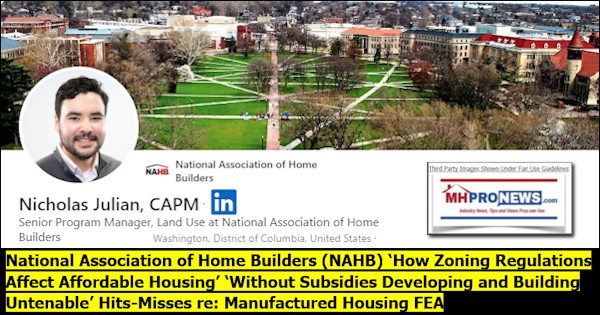

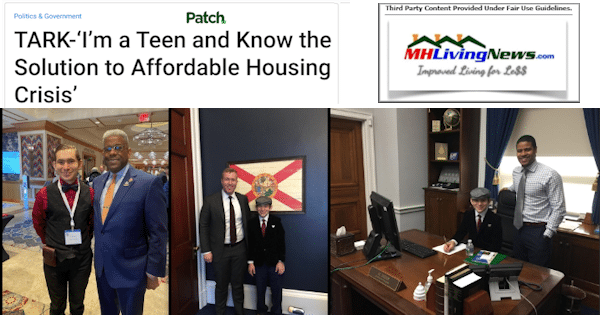
3) MHLivingNews and MHProNews favorably presented the thoughts of former HUD Secretary Dr. Carson on several occassions. During Carson’s term at HUD, the Innovative Housing Showcase (IHS).
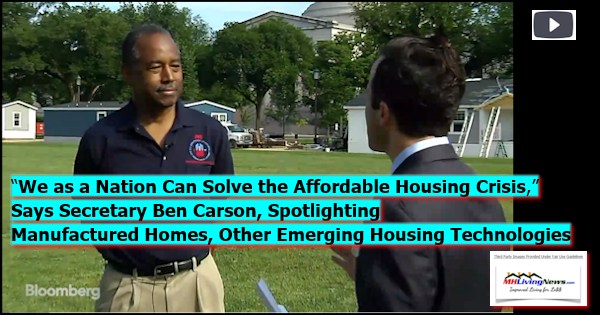

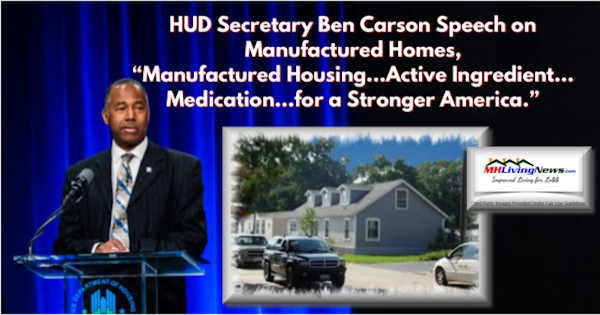
4) Stating the obvious, it remains to be seen what HUD Secretary Turner will do as HUD Secretary. That noted, Secretary Turner said during his confirmation hearing that his job is to enforce the law. If Secretary Turner enforces the law enacted by Congress in the Manufactured Housing Improvement Act (a.k.a.: MHIA, MHIA 2000, 2000 Reform Act, 2000 Reform Law), then the experience of the state preemption implementation in California and elsewhere with Accessory Dwelling Units (ADUs) strongly suggests that manufactured housing will rise rapidly in the coming years and without further taxpayer expenses. In fact, taxpayer expesenses would likely decline because subsidies would decline over time as more Americans become homeowners of affordable manufactured homes. To learn more, see the linked reports.











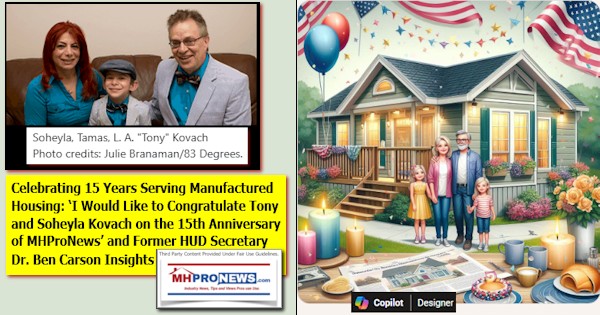

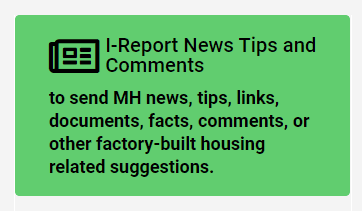

Mobile Home and Manufactured Home Living News explores the good, bad, and ugly realities that keep the most proven form of affordable home ownership under-appreciated and misunderstood. MHLivingNews provides third-party research and other resource collections and reports not found on other sites. We also provide thought provoking analysis that are designed to open minds and hearts. This is the widely acknowledged best source for authentic news on mobile and manufactured home living, as well as the policies that impact this segment of housing that provides 22 million Americans with good, surprisingly appealing living.
On our MHProNews sister-site and here on MHLivingNews, we lay out the facts and insights that others can’t or won’t do. That’s what makes our sister site and this location the runaway leaders for authentic information about affordable housing in general, the politics behind the problems, and manufactured homes specifically.
That’s a wrap on this installment of “News through the lens of manufactured homes and factory-built housing” © where “We Provide, You Decide.” © ## (Affordable housing, manufactured homes, reports, fact-checks, analysis, and commentary. Third-party images or content are provided under fair use guidelines for media.) (See Related Reports, further below. Text/image boxes often are hot-linked to other reports that can be access by clicking on them.)
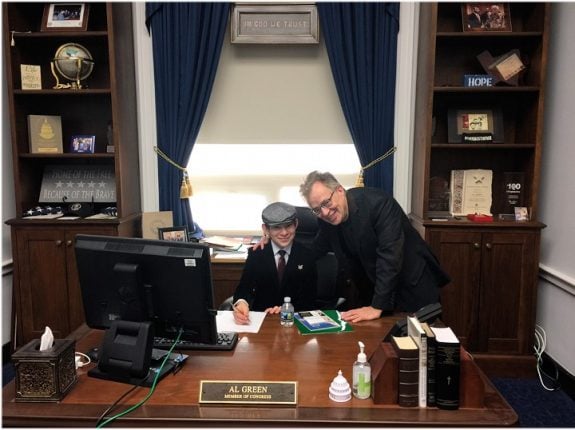
By L.A. “Tony” Kovach – for MHLivingNews.com.
Tony earned a journalism scholarship and earned numerous awards in history and in manufactured housing. For example, he earned the prestigious Lottinville Award in history from the University of Oklahoma, where he studied history and business management. He’s a managing member and co-founder of LifeStyle Factory Homes, LLC, the parent company to MHProNews, and MHLivingNews.com. This article reflects the LLC’s and/or the writer’s position, and may or may not reflect the views of sponsors or supporters.
Connect on LinkedIn: http://www.linkedin.com/in/latonykovach
Recent and Related Reports:
The text/image boxes below are linked to other reports, which can be accessed by clicking on them.

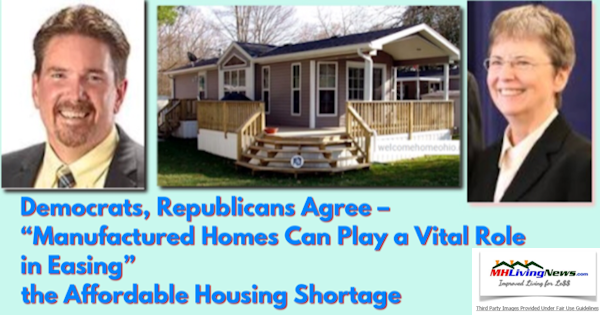
 manufacturedhomelivingnews.com Manufactured Home Living News
manufacturedhomelivingnews.com Manufactured Home Living News

